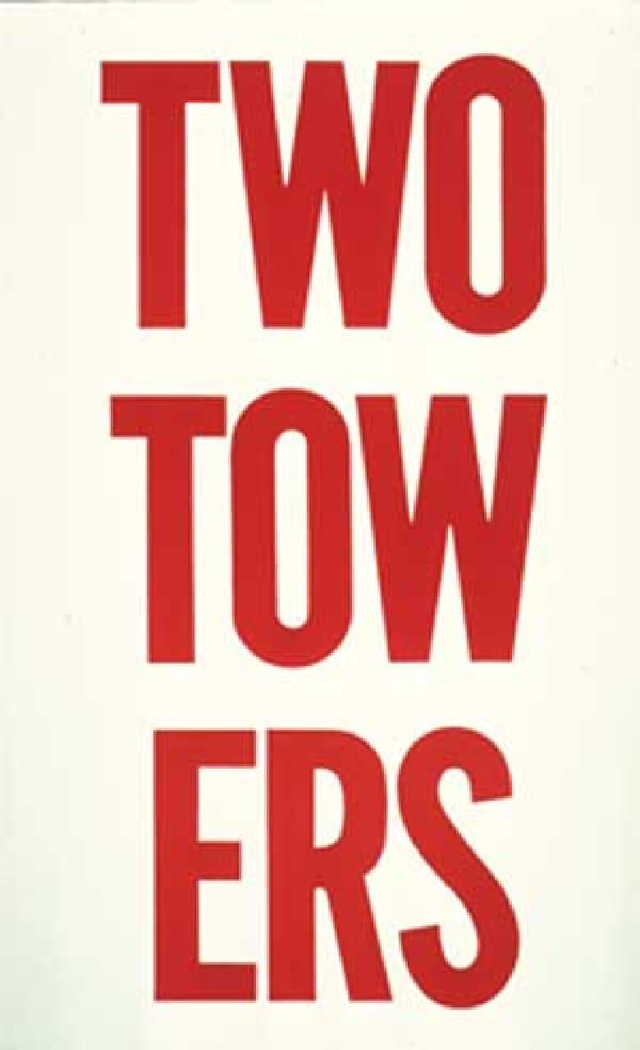Words' Matter
Corporate Art has partnered with the Disabilities Awareness Network Employee Resource Group at Progressive for an art exhibition called "Words' Matter," providing a rich backdrop for us to consider and examine a range of topics surrounding the very nature of language and communication.

The exhibition launched in 2016 during Disabilities Awareness Month (October) and as such offers a rich backdrop for conversations specifically relative to disability topics. The partnership includes inspiration from writer/educator Elizabeth Brewer, assistant professor of English and the director of composition at Central Connecticut State University.
Elizabeth Brewer holds a PhD from The Ohio State University and routinely writes and speaks on attitudes about disability and illness. She speaks nationwide about using inclusive, respectful language and overcoming attitudinal barriers that might exclude people with disabilities from many aspects of life. Brewer encourages honest reflection on the attitudes we hold about disability and illness. She analyzes common phrases and examples from popular culture to show how illness and disability often evoke pity and fear. Elizabeth suggests an alternative view—that changing levels of ability are part of what it means to be human. She suggests strategies for talking about our differences with respect (for example, "wheelchair user" instead of "confined to a wheelchair") instead of discomfort.
Words’ Matter, an essay by Kristin Rogers, art education manager, The Progressive Art Collection
"Words' Matter" intentionally conflates the visual and the verbal, creating an arena where the two entities rely on and react to one another. Even the show’s title establishes a play on words, with the possessive "s" hinting at the very matter of words, treating the term "matter" both as a noun (material) and as a verb (state of being important). This becomes an essential double-meaning as we contemplate both the form of these artworks (the material construction) as well as the content within the show (the ideas we extract). These artworks begin with a simple tactic of incorporating texts or at times conspicuously omitting texts in the makeup of their form. However, they journey much further into content-rich discussions about the manner and meaning of words—how we use and misuse them, both sensitively and insensitively, to communicate our ideas.
The journey of discovering content in visual art is made complete when we unpack our own ideas about an artwork's proposition—like the words on a page being met by a reader/interpreter. For this exhibition, let's begin with a shared acknowledgement that visual art is a form of dialogue, a type of communicating. Let's even call it visual language. By accepting this notion, two wonderful things can happen. For openers, we can more easily appreciate that artworks are indeed containers of ideas. And, perhaps more importantly, we can better understand our own responsibility to greet an artwork as an invitation to join a conversation. This second point is particularly liberating, as it opens the door for us to have strong opinions and to voice those opinions, and to contribute to the shape of how the conversation unfolds—just as we would if we were, instead, using verbal language.
The relationship between visual language and verbal language is a long and storied bond—dating as far back as the cave drawings of prehistoric history, leading up to the hieroglyphs of Ancient Egypt, and time warping right to contemporary visual artists who, still today, routinely employ written and verbal language in the mix of their visual creations. In the mid-20th century, linguistics (the scientific study of language) reached a fever pitch, particularly in the examination of languages' many forms and gradations and the varied congruities and incongruities between connotation and denotation. Amid these examinations, a canonical artist named Joseph Kosuth presented a visual artwork that so decisively captured the spirit of all this scholarship. In his work "One and Three Chairs," the viewer sees three main components—a physical chair against the wall, a photograph of the same chair, and the printed dictionary definition of the word chair. By standards of postmodern semantics, of course all three of these depictions are indeed a "chair," equally if different. This artwork, while perhaps cheeky, so smartly reveals the inadequacies of languages' ability to represent the "truth" of things—that ultimately nuance and inference lurk in the subtext of all types of communication. Similarly, the exhibition "Words' Matter" reminds us about the depth and breadth of the words we choose. The show challenges us to attentively consider the ways in which we communicate and how the substance of our words and the means of our delivery impact how we are heard and interpreted.
Again, this exhibition brings focus to a cultural conversation that has increasing readership—namely, the notion that "words matter." With polarization seemingly on the rise and an ever-widening field of communication platforms (with all of their potential inherent flaws), more and more people are looking with fresh eyes and renewed thoughtfulness at the ripple effects of communication breakdowns, terminology misconstructions, and the outright complexity of speaking clearly and being understood ("straight talking"). This is that aforementioned dance between connotation and denotation—what we say, how we say it, what we mean, and how we are interpreted by others.
Given the vast opportunity for misfires or backfires within the course of communicating, perhaps we would all be well served by reinvesting in a more contemplative manner of dialogue—one that holds dear the belief that our words are constructions that go well beyond the mere guttural utterances escaping our mouths, hands, and bodies. In other words (pun intended), if we can remember that communicating is a two-way street, involving both the delivery of language and the receiving of ideas, we stand a better chance of tempering the matter of our words with selflessness and a consideration of how our words might be perceived—a temperament which arguably creates a smoother runway for more clear communication. After all, understanding and being understood are surely civic tools that can lead to a deeper appreciation and empathy for our shared and our different values.


















